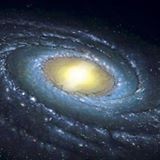Astrophysicists at the University Of Waterloo and Guilhem Lavaux of the Institute d'Astrophysique de Paris created a 3D map that offers the most comprehensive picture of the Cosmic Universe around us.
The spherical map spans an area of two billion light years and shows galaxies in their superclusters enabling the scientists to study how matter and particularly dark matter is distributed in the universe. Dark Matter is the one of the most sought after unsolved mysteries of Physics.
Astrophysicists Professor Mike Hudson, Jonathan Carrick and Stephen Turnbull were involved in this study. Speaking to The Space Reporter, Hudson of the University Of Waterloo remarked that the distribution of galaxies is uneven just like a mountain range and doesn't follow any set pattern.
This is in congruence with developments owing to origin of large scale structures from quantum fluctuations in early universe.
According to the Science Daily, the light blue and white areas on the map represent greater concentration of galaxies. On the other hand, the red area represents the largest collection of galaxies called the Shapley concentration.
The world's largest primary research journal for astronomy and astrophysics - "Monthly Notices of the Royal Astronomical Society" published this map.
Over the years, scientists learned that galaxies move with peculiar velocities due to the uneven expansion of the universe. The Milky Way and Andromeda Galaxies for example are moving at a speed of two million kilometers per hour.
This discovery will help scientists study the dark matter, the discovery of which was not easy as its existence can only be established by its gravitational effects on matter and light. However, it accounts for the majority of mass concentration in the universe.



























